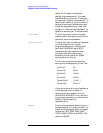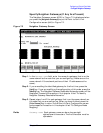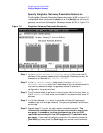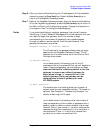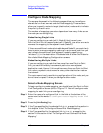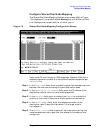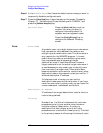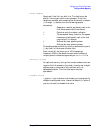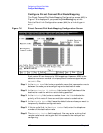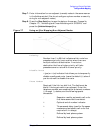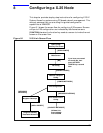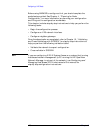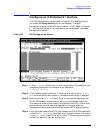
120 Chapter7
Configuring a Point-to-Point Node
Configure Node Mapping
Step 6. In the Disable Route field, leave the default alone unless you want to
temporarily disable a configured route.
Step 7. Press the
[Save Data] key to save the data on the screen. Proceed to
Chapter 10 , “Validating and Cross-Validating with SYSGEN,” and
press the
[Validate Netxport] key.
Optional Keys Press the
[Next Link] key to call up
another link when you want to
configure information about its
adjacent and non-adjacent nodes.
Press the
[Config Directry] key to
configure the Network Directory
screen.
Fields Route Name
A symbolic name, up to eight alphanumeric characters,
that represents a route between the node you are
configuring and a destination node. The route name is
only used within the NMMGR program. It is most
useful when the node you are configuring has more
than one possible way of accessing a target
(destination) node. It identifies different routes to
target nodes and is not the actual target node name. It
is used because you may need a way to identify more
than one route to a target node. There should be at
lease one symbolic route name for routes to every other
destination node on the network unless you use the “@”
wildcard destination IP address.
To help keep track of routes, you can use the
destination node name as the route name. If you have
more than one route to a given node, you can name the
routes nodename1, nodename2, and so forth.
Destination IP Address
IP address of the target (destination) node for which a
route is being defined.
Priority
Number from 1 to 99 that indicates which route has
precedence (priority) over another when there are
multiple routes to a destination. A route to a
destination that has a higher priority will take
precedence over a route with a lower priority. This field
is the primary means of influencing the choice of route.



